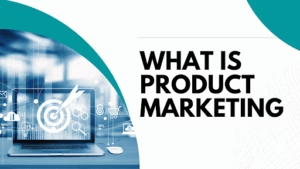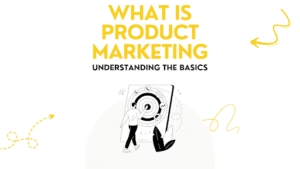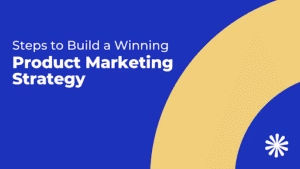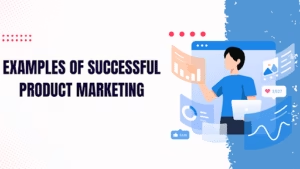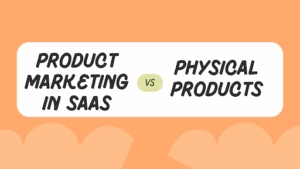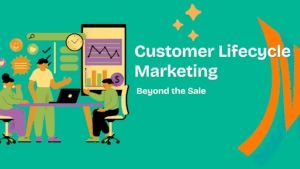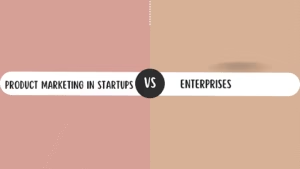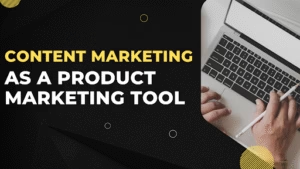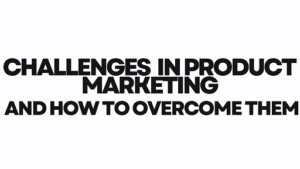Introduction: What is Product Marketing?
If you’ve ever wondered why some products become overnight sensations while others struggle to gain traction, the answer often lies in product marketing.But what is product marketing exactly? At its core, it is the discipline of positioning, messaging, and promoting products in a way that drives adoption, customer engagement, and long-term success.
Unlike traditional marketing, which focuses on building brand awareness and generating leads, product marketing sits at the intersection of product management, sales, and customer success. It ensures that the product resonates with the right audience and solves their problems effectively.In this 4000-word guide, we’ll dive into everything you need to know about what is product marketing—from its definition and importance to strategies, frameworks, challenges, and future trends.
Understanding the Basics: What is Product Marketing?
Product marketing is the process of bringing a product to market, driving demand, and ensuring its success throughout the customer lifecycle.
It involves:
- Defining target customer personas.
- Crafting unique positioning and messaging.
- Designing go-to-market (GTM) strategies.
- Launching products effectively.
- Driving customer adoption, retention, and advocacy.
In other words, product marketing makes sure customers not only know about your product but also understand, value, and continue using it.
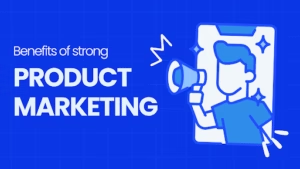
Benefits of Strong Product Marketing:
- Clear communication of value: Customers instantly see how your product helps them.
- Increased adoption: Faster onboarding and user engagement.
- Sales enablement: Equips sales teams with tools to close deals.
- Market differentiation: Positions your product above competitors.
- Customer retention: Keeps users engaged, reducing churn.
Core Responsibilities in Product Marketing
Market Research
Product marketers study customer needs, competitor offerings, and industry trends to identify gaps.
Positioning and Messaging
Defines how the product should be perceived and communicates its unique value proposition.
Go-to-Market Strategy (GTM)
Plans the product launch, pricing, distribution, and promotional campaigns.
Product Launches
Involves cross-channel promotions, PR, email marketing, and events.
Sales Enablement
Creating battle cards, product sheets, and training sessions for sales teams.
Customer Lifecycle Marketing
Post-purchase strategies like onboarding, retention, upselling, and advocacy.
Both play an important role, but product marketing digs deeper into customer value and retention.
The Product Marketing Frameworks You Should Know
AIDA Model (Attention, Interest, Desire, Action)
Guides messaging through stages of customer engagement.
Jobs-to-Be-Done (JTBD)
Focuses on the tasks customers “hire” products to do.
STP Framework (Segmentation, Targeting, Positioning)
Helps refine who you market to and how you position your product.
Product-Led Growth (PLG)
Uses the product itself as a driver of customer acquisition and retention.
Steps to Build a Winning Product Marketing Strategy
1. Define Buyer Personas
Identify customer demographics, behaviors, and pain points.
2. Analyze Market & Competitors
Spot opportunities where your product stands out.
3. Develop Positioning & Messaging
Highlight your unique value proposition and benefits.
4. Create a Go-to-Market Plan
Decide pricing, distribution, and launch tactics.
5. Launch the Product
Leverage content, PR, events, influencers, and digital marketing.
6. Enable the Sales Team
Provide scripts, training, and demo materials.
7. Track Metrics & Improve
Monitor KPIs like retention, churn, adoption, and revenue.
Examples of Successful Product Marketing
Apple: iPhone Launches
Apple creates excitement through storytelling and a focus on lifestyle benefits.
Dropbox: Referral Programs
A simple yet effective campaign turned users into advocates, fueling viral growth.
Airbnb: Experience-Focused Marketing
Airbnb positioned itself as a way to live like a local—not just book a room.
Slack: Workplace Productivity
Slack focused on solving inefficiency, positioning itself as a team productivity tool.
Product Marketing in SaaS vs. Physical Products
SaaS Products
- Relies on free trials/freemium models.
- Emphasizes onboarding and retention.
- Success metrics: MRR, churn, LTV.
Physical Products
- Focuses on distribution, packaging, and retail visibility.
- Influencer marketing and product reviews play big roles.
- Success metrics: sales growth, brand loyalty.

The Future of Product Marketing (2025 and Beyond)
- AI-powered personalization for tailored customer journeys.
- Predictive analytics to forecast adoption and churn.
- Community-driven marketing through user advocacy.
- Sustainability-driven positioning as customers demand ethical choices.
- Cross-functional collaboration as product, sales, and marketing become more integrated.
Crafting Product Messaging: The Heart of Product
MarketingMessaging is the soul of product marketing. It’s not just about what your product does—it’s about how it makes your customers feel and why it matters to them.
How to Create Winning Messaging:
- Focus on benefits, not features
Customers don’t care about technical specs—they care about the outcomes. Instead of saying “Our camera has 20MP,” say “Capture every memory in stunning detail.” - Use customer language
Avoid jargon. Speak in terms your audience understands and resonates with. - Leverage storytelling
Humans connect with stories. Case studies and user testimonials are powerful tools. - Highlight differentiation
Make it clear how your product stands apart from competitors.

Positioning Products in the Market
Positioning answers the fundamental question: Why should customers choose you over others?
Framework for Positioning
- Target audience: Who is this for?
- Market category: What industry/space does it compete in?
- Unique differentiator: What makes it special?
- Proof points: Evidence that supports your claims.
📌 Example: Tesla positions itself not just as an electric car manufacturer but as a sustainable lifestyle brand with cutting-edge innovation.

Go-to-Market (GTM) Strategy
A GTM strategy is the blueprint for launching and scaling a product.
Key Components:
- Pricing models: Freemium, subscription, one-time purchase.
- Distribution channels: Direct sales, online platforms, retail.
- Promotion tactics: PR campaigns, influencer marketing, email automation.
- Customer onboarding: Smooth adoption with tutorials and support.
Sales Enablement Through Product Marketing
Product marketers empower sales teams by providing the right resources to convert prospects.
Examples of Sales Enablement Content:
- Battle cards (competitive comparisons).
- Product demo scripts.
- Case studies and success stories.
- Objection-handling guides.
📌 Case in point: HubSpot equips its sales team with extensive playbooks that tie into its inbound marketing philosophy.
Customer Lifecycle Marketing: Beyond the Sale
Many businesses make the mistake of stopping marketing after acquisition. But product marketing continues throughout the customer journey.
Stages of Lifecycle Marketing:
- Onboarding – Helping customers get started quickly.
- Engagement – Keeping users active with updates, tutorials, and content.
- Retention – Preventing churn through proactive support.
- Upselling & Cross-Selling – Encouraging higher-value purchases.
- Advocacy – Turning customers into brand ambassadors.
Product Marketing in Startups vs. Enterprises
Startups
- Usually, one person wears multiple hats (product manager, marketer, and salesperson).
- Focus is on finding product-market fit quickly.
- Marketing relies on lean strategies like content, social media, and community-driven growth.
- Budgets are tight, so referrals and word-of-mouth play a big role.
📌 Example: Notion grew rapidly by leveraging communities and user-generated templates rather than heavy paid campaigns.
Enterprises
- Have dedicated product marketing teams.
- Focus is on scaling adoption across different markets.
- Heavily invest in advertising, account-based marketing (ABM), and events.
- Product marketers collaborate with regional teams to adapt messaging for global audiences.
📌 Example: Microsoft tailors its Office 365 marketing for enterprises differently than for students or small businesses.
The Role of Psychology in Product Marketing
Great product marketing isn’t just about facts—it’s about emotions and psychology.
Psychological Principles Marketers Use:
- Social Proof: Customer reviews, testimonials, and case studies build trust.
- Scarcity & Urgency: Limited-time offers drive faster decisions.
- Loss Aversion: Customers act faster when they feel they might miss out.
- Authority: Featuring endorsements from experts or influencers builds credibility.
- Consistency: Onboarding emails and user experiences that encourage repeated engagement increase retention.
📌 Example: Amazon uses urgency (“Only 2 left in stock!”) to nudge users toward quick action.
Content Marketing as a Product Marketing Tool
Content isn’t just about brand awareness—it’s also a product marketing powerhouse.
Types of Content That Drive Product Adoption:
- How-to guides that educate users.
- Product comparisons that highlight advantages over competitors.
- Case studies showcasing real-world value.
- Explainer videos for quick product overviews.
- Webinars to onboard customers interactively.
📌 Example: HubSpot’s inbound marketing content doubled as education and product adoption, fueling its growth.

Product Marketing for SaaS vs. Consumer Goods
SaaS Products
- Relies on product-led growth (PLG) models.
- Offers free trials, freemium versions, and demos.
- Focuses heavily on customer success to reduce churn.
- Metrics: Monthly Recurring Revenue (MRR), churn, LTV.
Consumer Goods
- Focus on brand image and packaging.
- Use influencer marketing, retail visibility, and customer reviews.
- Success measured by sales volume, shelf space, and repeat customers.
📌 Example: Coca-Cola focuses on lifestyle branding, while SaaS companies like Zoom focus on usability and adoption.
Challenges in Product Marketing and How to Overcome Them
1. Misalignment Between Teams
- Problem: Product, sales, and marketing often operate in silos.
- Solution: Regular cross-functional meetings, shared OKRs, and collaboration tools.
2. Market Saturation
- Problem: Standing out in crowded markets is tough.
- Solution: Focus on differentiation through unique value propositions and customer storytelling.
3. Customer Education
- Problem: Complex products need customer training.
- Solution: Create tutorials, onboarding guides, and in-app tooltips.
4. Rapidly Changing Trends
- Problem: New technologies and customer behaviors evolve fast.
- Solution: Stay agile, experiment with new tactics, and keep listening to customer feedback.
Future of Product Marketing (2025 & Beyond)
1. AI-Driven Personalization
- AI tools will create hyper-personalized customer experiences.
- Example: Netflix recommendations powered by AI enhance retention.
2. Community-Led Growth
- Brands will invest in communities (forums, Discord, Slack groups).
- Example: Figma’s design community became a growth engine.
3. Sustainability as a Differentiator
- Customers prefer eco-conscious brands.
- Example: Patagonia markets itself around sustainability, not just outdoor wear.
4. Cross-Functional Teams
- Product marketing will become more integrated with data science, UX, and customer success.
5. Globalization with Localization
- Products must adapt to cultural contexts and local languages.
- Example: Spotify’s playlists are tailored by country, boosting adoption worldwide.
Conclusion
Product marketing isn’t just a function within a company—it’s the backbone that connects innovation to impact. A product can have all the right features, but without clear positioning, messaging, and a strategy to reach the right audience, it risks being overlooked in a crowded market. Product marketing ensures that customers don’t just see a product, but also understand its value, believe in its relevance, and choose it over alternatives.
For more info, visit

